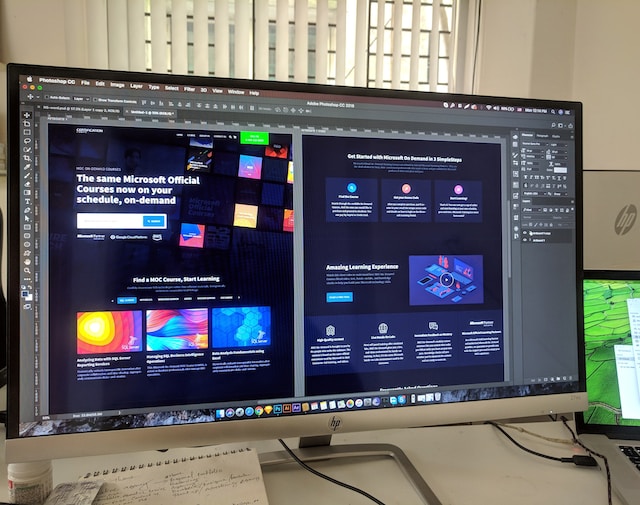Exploring the Impact of Website Design on Student Engagement
Picture this: You're surfing the internet, and you come across a website with a chaotic layout, loud colors, and text that's hard to read. How long would you stay? Now, imagine that this is a website you need to use for your studies. Unfortunately, this scenario is not uncommon. The importance of good website design is often overlooked, especially when it comes to educational platforms.
Student engagement is a vital element in the learning process. The more engaged students are, the more effectively they can learn. Websites, especially those used for educational purposes, can either encourage or discourage student engagement. Some students might even be tempted to resort to a "do my essay paper" approach if the website they're using for research is poorly designed. This article aims to explore the impact of website design on student engagement and why it matters.
Understanding Website Design
Website design is more than just making a site look good. It's about creating a user-friendly environment that is easy to navigate and makes the visitor's experience as pleasant as possible. A skilled essay writer, like a skilled web designer, knows the importance of layout, typography, color scheme, mobile responsiveness, and loading speed.
- Layout and Navigation: The website's structure should be logical and straightforward. A confusing layout can deter users from exploring the website further.
- Typography and Readability: The text should be easy to read and understand. Poor typography can make even the most exciting content seem boring or complicated.
- Color scheme: Colors should be pleasing to the eye and contribute to the overall feel of the site. Unpleasant color combinations can strain the eyes and deter users.
- Mobile responsiveness: The site should be accessible and functional on all devices. Today, many students use their phones for studying, and a non-responsive site can be a major inconvenience.
- Loading speed: Slow-loading websites can lead to impatience, frustration, and disengagement.
Understanding Student Engagement
Student engagement is the degree of attention, curiosity, and interest that students show when they are learning. It includes students' involvement in academic tasks like reading, writing, and problem-solving. Factors that contribute to student engagement include:
- The relevance of the content
- Teaching methods
- Learning environment
- Website design (in case of online learning)
The Impact of Website Design on Student Engagement
When it comes to the intersection of web design and student engagement, we see some exciting dynamics.
A well-planned layout makes it easier for students to find the information they're looking for, thereby improving engagement. An organized website minimizes frustration and enhances the user experience, promoting a more in-depth exploration of the content.
Typography plays a vital role in engagement too. Legible font sizes and styles, along with adequate spacing, can encourage students to spend more time reading the content. If the text is too small, too cramped, or uses a complicated font, even the best essay writing services would struggle to hold the reader's interest.
Similarly, a well-thought-out color scheme can have a significant impact on mood and focus. For instance, blue is known for its calming effects and can help improve concentration. In contrast, excessive use of bright, contrasting colors can be distracting and strain the eyes.
We cannot overlook the importance of mobile responsiveness. With a large number of students using mobile devices for studying, a site that isn't mobile-friendly can be incredibly off-putting. It can lead to decreased engagement, with students potentially opting to 'pay for essay' services rather than struggle with an unresponsive website.
Lastly, website speed can make or break the user experience. A website that takes forever to load can discourage students, leading to decreased engagement.
Case Studies Showing the Impact of Website Design on Student Engagement
Consider two hypothetical websites: StudyAce and InfoDump.
StudyAce has a clean, intuitive design, easy navigation, and responsive design. It uses pleasing colors, legible typography, and loads within seconds. Students using StudyAce show higher engagement rates, spend more time on the site, and perform better academically.
On the other hand, InfoDump, despite having valuable content, suffers from a cluttered layout, poor color choices, and unresponsive design. It takes a long time to load, and the text is challenging to read. Students visiting InfoDump show low engagement, spend less time on the site, and report higher levels of frustration.
Strategies to Improve Student Engagement through Website Design
Improving website design for better student engagement is achievable with these tips:
- Improve Layout and Navigation: Organize content logically and clearly. Use menus and submenus to help users navigate the site.
- Enhance Typography and Readability: Choose easy-to-read fonts and ensure your text is spaced out well. Break up large blocks of text with headings, subheadings, and bullet points.
- Choose an Effective Color Scheme: Opt for soothing, contrasting colors that make your site pleasant to look at and your text easy to read.
- Ensure Mobile Responsiveness: Optimize your website for mobile devices to ensure it's accessible to all users.
- Improve Website Speed: Compress images, leverage browser caching, and minify CSS and JavaScript to improve your site's loading speed.
Conclusion
The impact of website design on student engagement is significant. While it may seem easier for a student to say, "I'll just pay for an essay," improving website design can make the learning process more engaging and efficient. From layout and navigation to loading speed, every element of design plays a role in how students interact with the website. By making conscious design decisions, we can create educational platforms that foster better learning and higher student engagement. In essence, good website design sets the stage for a better learning experience.
Copyright © . All Rights Reserved

